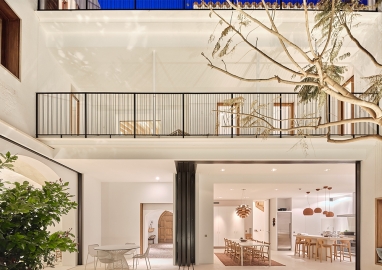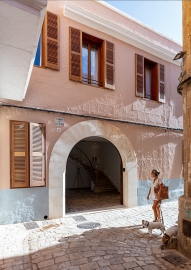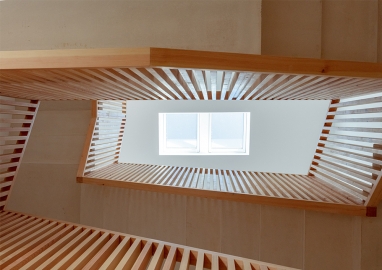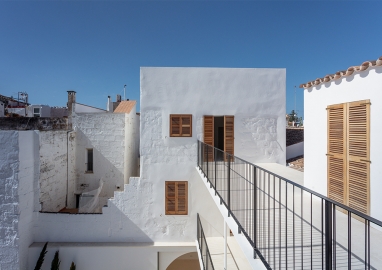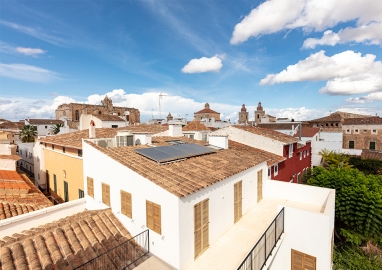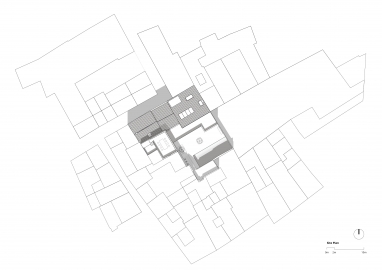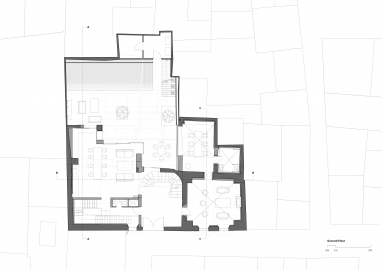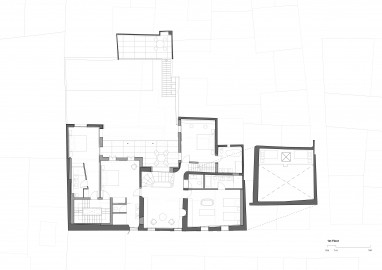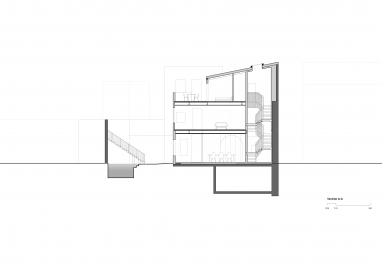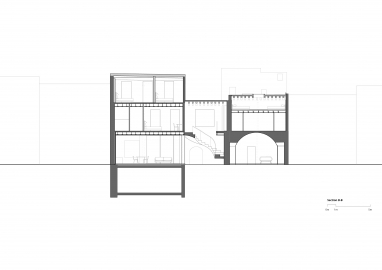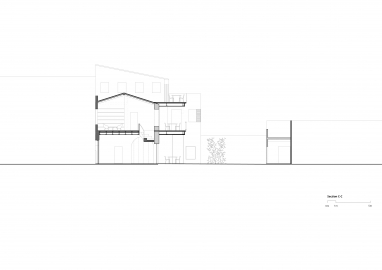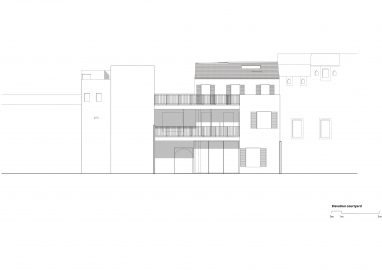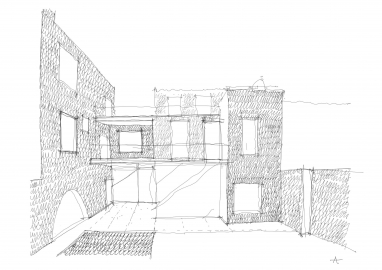Casa B (also known as Villa B)
Casa B transforms an abandoned structure in the historical city into a dwelling of contemporary standards. Repairing parts of the existing structure and adding a new layer of architecture, the renovated house was formed by carefully peeling off layers that had been added over time. Highlighting the original qualities, the building is given a new life.
Situated in the heart of the historical city of Ciutadella de Menorca rich in culturally valuable sites, Casa B is built on the remains of an abandoned stone building that had fallen into ill repair. Parts of the building are landmarked.
The foundations for the original building were laid during the 17th century. Over time, the building was used as a dwelling for multiple families in various configurations. Many layers of diverse elements from spatial dividers to dropped ceilings and technical systems as well as garages and other makeshift sheds in the yard were added over years to respond to the changing needs of the residents in different times. The result was a complex and crowded spatial arrangement and dark rooms with little daylight. Finally, the building was abandoned as a structure no longer fit to serve as housing. It stood empty for many years until the current owners found it.
The building was carefully renovated to work in harmony with the old city. The roof and street façade, the central stair, and the division of spaces linked with it are landmarked. Leaving the layers of old and new visible, as much as possible of the existing structure was restored. The new elements were kept to a minimum.
With the biggest alterations concentrated in the middle, the taller parts on the sides were restored with minimal interventions. The drop ceilings, partition walls, and sheds on the yard were removed. The original structure with its brick walls and vaulted ceilings was uncovered and left exposed. Establishing a new connection between the interiors and the yard, a new spatial program was created, and the formerly cramped and dark spaces were turned into spacious rooms with a lot of light.
Three stairways of different character form a skeletal structure for the building. The old central stair was carefully restored to its original design. A new wooden stairway with a skylight was created to lead to the upper floors. A new stairway crafted of local stone leads to the basement. The new staircases form a contemporary and contrasting pair to complement the old stairs.
The materials were consciously chosen to be sustainable and enduring. In the new parts, local stone from a quarry nearby and Nordic spruce complement each other forming an interesting pair of materials of contrasting nature. Wood is used in the doors, window frames and louvers as well as in the ceilings in rooms where new ceilings were necessary. Solar energy is used for heating and cooling the house.
With a wall of sliding glass doors, the ground floor spaces open out to the yard allowing life in the house to extend out. Creating an intermediary zone between indoors and outdoors, balconies with wooden shutters provide shading to shelter the bedrooms from heat. To provide comfort in the summer months, an outdoor pool was added in the yard in place of a former garage. In the cold season, it is possible to close off some of the spaces to create a more compact unit.
Shared spaces, including the kitchen and dining area, are placed on the ground floor and in the middle part of the building. Bedrooms with their private bathrooms are on the upper floors. The clear division between the shared spaces and the more private rooms makes it possible for multiple families to use the house at the same time.

